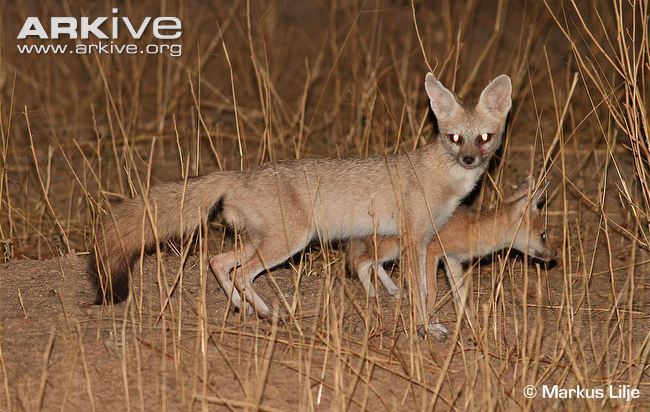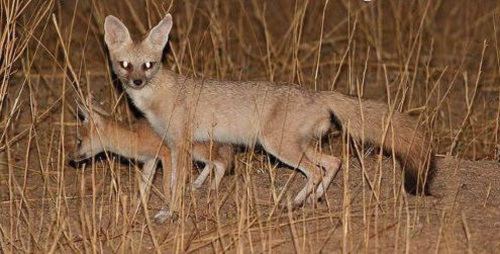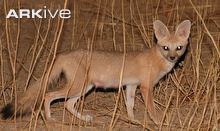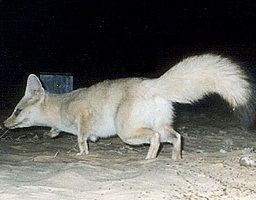Higher classification True foxes | Phylum Chordata Scientific name Vulpes pallida Rank Species | |
 | ||
Similar Rüppell's fox, Cape fox, Blanford's fox, Bengal fox, Sechuran fox | ||
The pale fox
The pale fox (Vulpes pallida) is a species of fox found in the band of African Sahel from Senegal in the west to Sudan in the east. It is one of the least studied of all canid species, in part due to its remote habitat and its sandy coat that blends in well with the desert-like terrain.
Contents
- The pale fox
- Subspecies
- Description
- Distribution and habitat
- Ecology
- Status
- The pale fox in popular culture
- References

Subspecies
There are five recognized subspecies:
Description

The pale fox is long-bodied with relatively short legs and a narrow muzzle. It is a relatively small canid with weight ranging from 4 - 6 pounds. The ears are large compared to other foxes but is typical of a desert inhabiting canid. The fur is generally a pale sandy color that turns white towards the belly. Its bushy tail is reddish brown and black at the tip.
Distribution and habitat

The pale fox is native to the Sahel, the semi-arid regions to the south of the Sahara Desert. It is present in Benin, Burkina Faso, Cameroon, Chad, Eritrea, Ethiopia, Gambia, Mali, Mauritania, Niger, Nigeria, Senegal, South Sudan and Sudan. The habitat is sandy or stony arid terrain, and the pale fox is able to relocate southwards and northwards in relation to the periodic droughts that affect these regions.
Ecology

The pale fox is typically inhabits stony deserts and semi-deserts although it occasionally ventures south into the savanna. It lives in small family groups with parents and their young. During the day they rest in dug burrows that can extend up to 15 meters long and descend up to 2 meters to the ground, at dusk they venture out and forage for food, which includes plants and berries as well as rodents, reptiles and insects. It has the ability to retain water from its food, and can go almost completely without drinking.
Status

Although the abundance of the pale fox is unknown, it seems to be a common species throughout its wide range. No particular threats have been identified although this fox is sometimes hunted because it raids villages and takes poultry, and it is sometimes killed by vehicles at night. The International Union for Conservation of Nature has rated its conservation status as being of "least concern".
The pale fox in popular culture
Mentioned by Vincent Price's character in the 1964 film "The Tomb of Ligeia".


